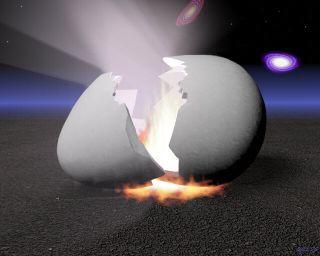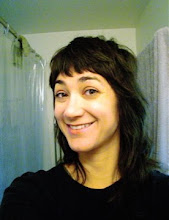
http://squallyshowers.files.wordpress.com/2009/06/marcel-duchamp.jpg
R.Mutt (Marcel Duchamp) "Fountain" 1917

http://www.tate.org.uk/liverpool/exhibitions/shopping/images/consume_ishoptherefore_large.jpg
Barbara Kruger "Untitled (I Shop Therefore I Am)" 1987
http://www.artandperception.com/v01/wp-content/uploads/2007/10/sl_after_mduchamp.JPG
Sherry Levine "Fountain (After Marcel Duchamp)" 1991

http://www.independent.co.uk/multimedia/archive/00035/richard_prince640_35078s.jpg
Richard Prince "Untitled (Cowboy)" 1989
http://media.tumblr.com/tumblr_ku8qsxXiCY1qzs4y4.jpg
Cindy Sherman "Untitled Film Still #6" 1977

http://www.scu.edu.au/schools/edu/ICT/student_pages/sem2_2004/gcrawford/Holzer_protect.jpg
Jenny Holzer "A Survival sorozatból" 1985-86

http://www.clevelandart.org/exhibcef/consexhib/illusmag/KIEFER_1.jpg
Anselm Kiefer "Lots Wife" 1989
http://www.mitterrand-cramer.com/Artists/gilbertgeorge/images/GilbertGeorgePiss%20Mooning72dpi-15cm.JPG
Gibert and George "Piss Mooning" 1996
http://www.amadelio.com/vlog/wp-content/uploads/A_2007/keith_haring_falckenberg.jpg
Kieth Haring "Untitled (Nuclear Sex Series)" 1981
Evolving out of Modernism, in the late 1970's and lasting to the late 1990's (although it may still be going on for some artists), Post-Modernism, by its very title, is defined in relation to Modernism. In the 19th century, science was developing a system of measuring and comparing by which it hoped to arrive at 'truths.' This way of understanding nature, behavior, culture and art gave rise to the term Structuralist, which valued a firm structure, built upon the assumption of these truths. In the early 20th century, during the time of Modernism, a new way of thinking was being formed called Post-Structuralist. This reaction to Structuralism and its rigidity, questioned data and firm 'truths,' calling them subjective and biased. It celebrated plurality and possibility.
Post-Structuralism, and its questioning stance, was a predecessor of Post-Modernism, which also questions previously accepted 'truths.' By middle-late 20th century, the term Post-Modern was being used to describe art that questioned the tenets of Modernism, such as Abstraction and the dominance of Male European artists. Some of it's important theorists are Jurgen Habermas who believed Post-Modernism to be merely a phase of Modernism. Habermas saw Modernism's self-criticism in Post-Modernism's questioning. In contrast was the theorist Jean-Francois Lyotard. Lyotard saw Post-Modernism's questioning to be at a deeper and more critical level, taking no 'known truths' for granted. Marcel Duchamp, with his questioning of authorship, context and content is considered a forerunner to Post-Modernism.
Some of the major artists of this period are Barbara Kruger, Sherry Levine, Richard Prince, Cindy Sherman, Jenny Holzer, Anselm Kiefer, Gilbert and George, and Kieth Haring to name a few.


No comments:
Post a Comment